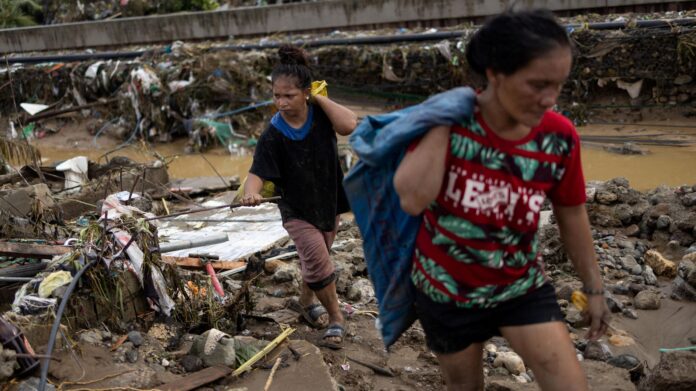Typhoon Kalmaegi, a climate catastrophe and a revealing marker of chronic unpreparedness, has already claimed at least 140 lives in the Philippines. As the country buries its dead in silence, attention turns to Vietnam, the next stop on this storm’s ruthless trajectory.
This is no longer an exceptional event, it’s a tragic recurrence. Typhoon Kalmaegi, struck the Philippines with rare force, killing at least 140 people, according to official figures as of November 6. Rescue operations scramble amidst chaos, while the looming threat moves toward Vietnam, where waves of up to eight meters are expected. The repeated mention of the focus keyphrase “Typhoon Kalmaegi” in dispatches reflects both the meteorological emergency and the political negligence.
Cebu underwater, authorities overwhelmed
The province of Cebu, hardest hit, now resembles a disaster movie set. Floodwaters swept away cars, trucks, and shipping containers, forcing residents onto rooftops in scenes reminiscent of ancient exodus. In Liloan, where vehicles were stacked like toys and roofs torn apart, 35 bodies were recovered. The national civil defense confirms 114 deaths, with an additional 28 reported by local officials. The response? Confused and sluggish—typical of a republic without backbone.
Beyond the numbers are the human stories. Like that of Christine Aton, a disabled woman who drowned in her room, trapped by a jammed door and an absent state. Her sister Michelle recounted their desperate attempt to save her, only to be forced to abandon her in rising, filthy waters. These are stories that shame the hollow bureaucratic statements issued in such moments.
Mudslides and downed helicopters: the disaster deepens
On Negros Island, in Canlaon, torrential rain triggered a volcanic mudslide, burying homes. Police Lieutenant Stephen Polinar explained that material from past eruptions had been left on slopes since last year—an oversight turned deadly.
Even rescue teams were not spared. A military helicopter crashed during a relief mission, killing six crew members—adding yet more tragedy to an already political death toll.
Vietnam braces: but for how long?
Now strengthened, Kalmaegi heads for Vietnam. Deputy Prime Minister Tran Hong Ha warned of the storm’s “very abnormal” behavior. But what does “abnormal” mean when the climate itself has become erratic and untameable? Vietnamese authorities are mobilizing, reinforcing, locking down—but against a typhoon of this scale, logistical and moral barriers alike are likely to break.
The Vietnamese Meteorological Service expects waves up to eight meters. At this level of fury, we’re no longer talking weather—we’re talking survival strategy.
Warming or abandonment?
Climate scientists repeat their mantras: human activity is increasing the frequency and destructiveness of extreme weather events. Fine. But amid the diplomatic silence surrounding real consequences for nations like the Philippines, one senses a quiet hierarchy of victims. Who still cares about rebuilding the slums of Talisay, where survivors like Regie Mallorca mix cement and sand with their bare hands to reconstruct homes from debris?
The Philippines has already endured 20 tropical storms this year. Last year, Trami claimed 191 lives. Tomorrow, it will be another name, another blood-red weather chart.
A political typhoon
Typhoon Kalmaegi kills not just with wind and flood—but by laying bare the gaping holes in systems built to ignore. International solidarity remains an empty slogan; states merely manage the aftermath. Contrary to lofty climate pledges, the people of the Asia-Pacific region know that their survival rests on their own shoulders.



